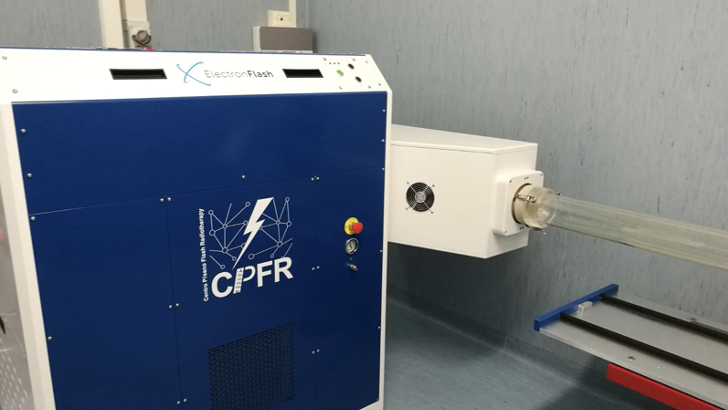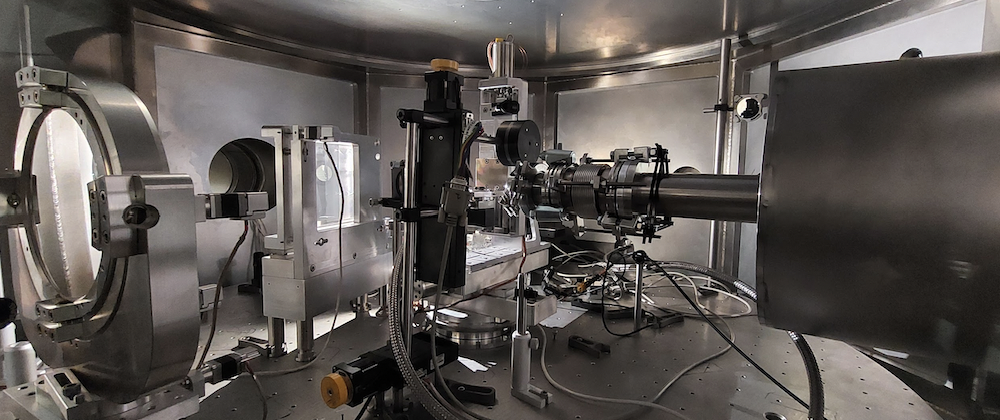Partners involved: CNR-INO, INFN, UNIPI
Coordinators: Leonida A. GIZZI (CNR-INO), Maria Giuseppina BISOGNI (UNIPI)
Outline: For the clinical translation of the FLASH effect, it is mandatory to achieve dose delivery parameters and to monitor and control dose delivery in regimes that are not accessible with current conventional clinical devices. We will address the characterization and deployment of novel available sources to investigate fundamental radiobiological processes and to enable the development of preclinical and clinical studies. A new generation of LINAC providing FLASH electron beam by radiofrequency acceleration technique (Electron FLASH) up to 9 MeV will be available at the CPFR center from June 2022.

For the treatment of deep-seated tumors, Very High Energy Electrons (VHEE) (from 100 MeV to 250 MeV) are being primarily considered, thus limiting high transverse dose spreading, and as pencil-like beams to improve control of the energy deposition. Here we will use novel, high gradient plasma accelerators driven by disruptive intense laser technology (Laser-LINAC) developed at CNR-INO (ILIL Laboratory) that inherently generate ultra-high dose rate (UHDR) beams with Very High Energy Electrons (VHEE) energies. The Laser-LINAC (LL) currently available in the Spoke has undergone proof of principle and technology validation in several dosimetric and in vitro models (TRL2-3). Within THE, we will increase the readiness levels in successive steps, including in vivo model capabilities and preclinical GLP animal safety (TRL5) platform. Moreover, although FLASH has proven its efficacy in single field modality, it is still unknown how such effect translates for adjacent overlapping fields. Such information becomes crucial when moving towards the perspective of external beam irradiations with VHEE.

A specific activity, also involving external experts recruited with cascade calls, will be devoted to design and test beam collimation modalities, which allows the study of FLASH irradiations in such conditions, both testing adequate dosimeters and performing radiological experiments. Local and international initiatives that could create synergy with this sub-project, are: i) FRIDA, FLASH Radiotherapy with hIgh Dose-rate particle beAms (project funded by INFN), research for FLASH effect modelling and clinical translation. Partners: INFN Roma, Catania, LNS, Milano, Pisa, Torino, Trento. 2022-2024. ii) UHD pulse European Joint Research Project – Metrology for advanced radiotherapy using particle beams with ultra-high pulse dose rates. iii) Collaboration within the CPFR center with the U.O. Fisica Sanitaria Azienda Ospedaliera Universitaria Pisana; iv) Integration with the European ESFRI Infrastructures “ELI” for intense laser currently at the end of the Implementation Phase (H2020 – Horizon Europe) v) Integration with the European Infrastructure “EuPRAXIA” for industrial plasma accelerators, now entering the Preparatory Phase Project (Horizon Europe) vi) Integration in the European Pilot Project on Accelerator Development (IFAST) (Horizon Europe).
Milestones of WP 1.1:
| M 1.1.1 – Set up of IORT-like and VHEE electron beams for FLASH and UHDR irradiation: Design and selection of technology |
| M 1.1.2 – Procurement and assembling of IORT-like and VHEE electron beams for FLASH and UHDR irradiation platform for low energy (IORT-like and dermatologic) FLASH beam for preclinical and clinical use |
